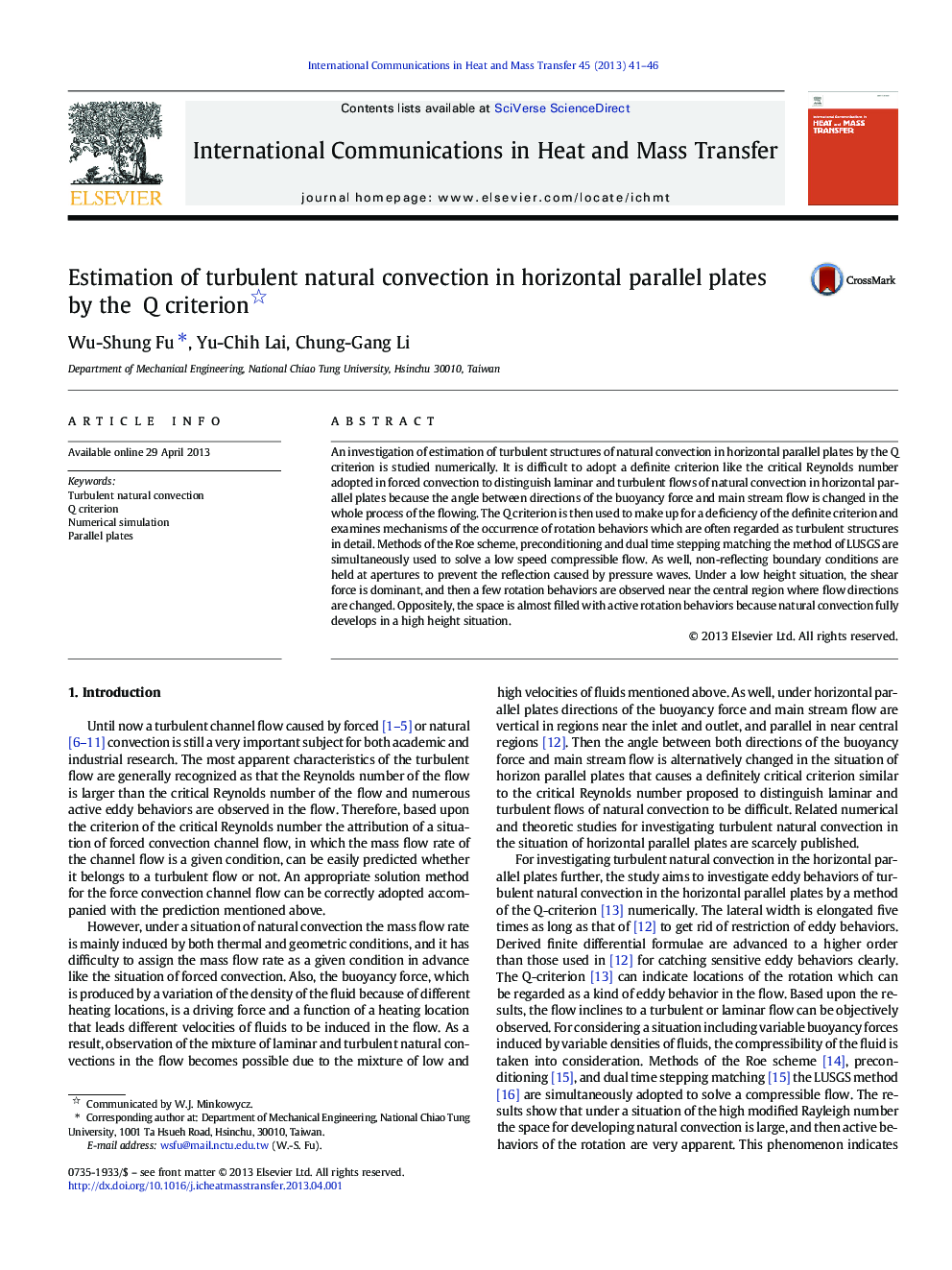| Article ID | Journal | Published Year | Pages | File Type |
|---|---|---|---|---|
| 653422 | International Communications in Heat and Mass Transfer | 2013 | 6 Pages |
Abstract
An investigation of estimation of turbulent structures of natural convection in horizontal parallel plates by the Q criterion is studied numerically. It is difficult to adopt a definite criterion like the critical Reynolds number adopted in forced convection to distinguish laminar and turbulent flows of natural convection in horizontal parallel plates because the angle between directions of the buoyancy force and main stream flow is changed in the whole process of the flowing. The Q criterion is then used to make up for a deficiency of the definite criterion and examines mechanisms of the occurrence of rotation behaviors which are often regarded as turbulent structures in detail. Methods of the Roe scheme, preconditioning and dual time stepping matching the method of LUSGS are simultaneously used to solve a low speed compressible flow. As well, non-reflecting boundary conditions are held at apertures to prevent the reflection caused by pressure waves. Under a low height situation, the shear force is dominant, and then a few rotation behaviors are observed near the central region where flow directions are changed. Oppositely, the space is almost filled with active rotation behaviors because natural convection fully develops in a high height situation.
Related Topics
Physical Sciences and Engineering
Chemical Engineering
Fluid Flow and Transfer Processes
Authors
Wu-Shung Fu, Yu-Chih Lai, Chung-Gang Li,
